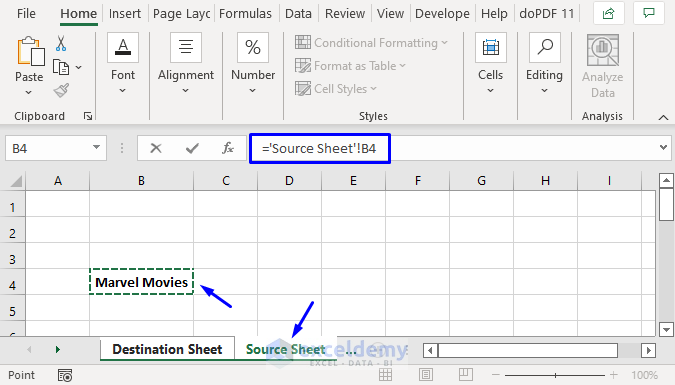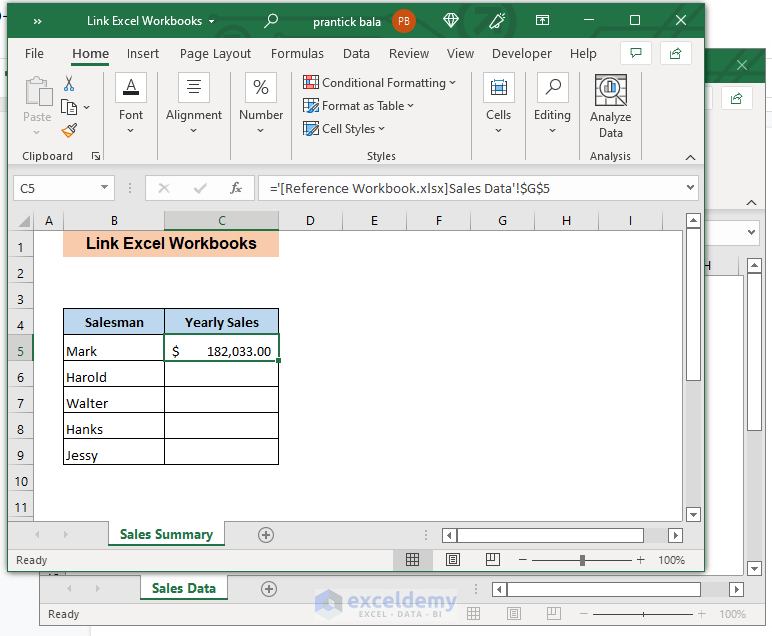5 Ways to Seamlessly Link Excel Sheets with Letters

If you're involved in data management or regularly work with Excel spreadsheets, you've likely encountered the challenge of organizing and integrating data from multiple documents. Excel offers robust features for linking sheets within the same workbook or across different workbooks to streamline your workflow. Here are five effective ways to seamlessly link Excel sheets with letters, making your data management smoother and more intuitive.
Using Hyperlinks

Hyperlinks can create a clickable path from one Excel document to another, making it easier to navigate between your workbooks.
- Right-click on the cell where you want to insert the hyperlink.
- Choose “Hyperlink…” from the context menu.
- In the dialog box that appears, select “Existing File or Web Page” and navigate to the file you wish to link to.
- Optionally, you can add a friendly name or screen tip for clarity.
- Click “OK” to finish.
🔍 Note: Hyperlinks work best for navigation, but they don’t update automatically with data changes.
Cell References

Cell references in Excel are a powerful tool for linking data between sheets:
- Click on the cell where you want the linked data to appear.
- Type the equal sign (=) and then select the source workbook (which must be open) and navigate to the sheet and cell containing the data you want to link.
- The formula will appear, e.g., ‘=Sheet2!A1’. You can adjust this formula manually if needed.
🔄 Note: Changes in the source cell will automatically reflect in the linked cell.
Excel’s Consolidate Tool

When you need to combine data from multiple sources, Excel’s Consolidate tool can be handy:
- Go to the Data tab.
- Select “Consolidate” from the “Data Tools” group.
- Choose the range or multiple ranges from different sheets, then decide how to consolidate the data (sum, average, etc.).
- Excel will then compile the data into the selected summary sheet.
🔎 Note: You can also select specific cells to link using this method if needed.
3D Formulas

3D formulas are for linking across multiple sheets within the same workbook:
- To sum the same cell across sheets, use a formula like ‘=SUM(Sheet1:Sheet3!B2)’, which sums cell B2 from Sheet1 to Sheet3.
📊 Note: This method is perfect for summary sheets or dashboards where you need to view totals or averages from various sheets.
Power Query

Excel’s Power Query is ideal for data analysts dealing with large datasets:
- From the Data tab, click “Get Data” and choose your data source.
- Use the ‘Combine’ option to merge data from multiple Excel files into one query.
- This tool can manage, clean, and transform data before loading it into Excel.
In these ways, you can not only enhance your data management but also make your work process more efficient. Linking Excel sheets helps you to:
- Quickly navigate between related documents.
- Keep your data synchronized across multiple files.
- Present comprehensive reports by aggregating information.
By mastering these linking techniques, you’ll be able to streamline your data management, allowing for more focus on analysis and decision-making rather than manual data wrangling. Keep in mind that understanding how these methods work is crucial for leveraging their full potential to fit your workflow.
Can I link sheets across different Excel workbooks?

+
Yes, you can link sheets between different Excel workbooks using cell references or hyperlinks.
Do linked cells update automatically when the source cell changes?

+
When using cell references, the linked cells will update automatically as the source data changes.
What are the benefits of using the Consolidate Tool?

+
It enables you to merge data from multiple sheets or workbooks efficiently, allowing for easy summary creation.



